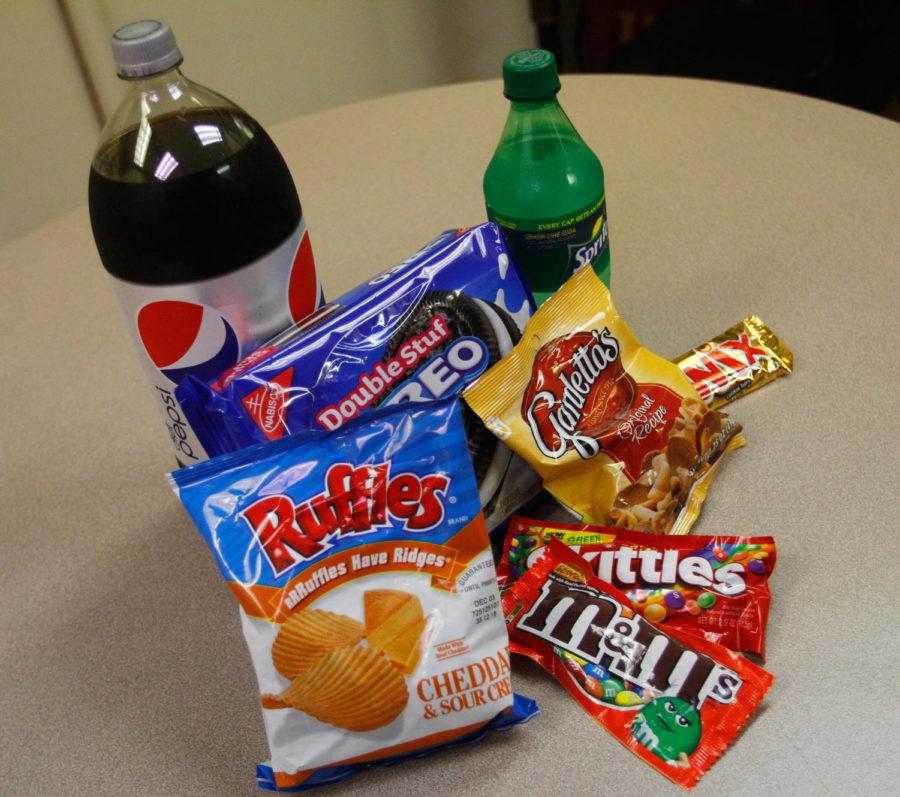Schnathorst: The year of the food stamp: Why government needs to roll back SNAP
Brian Achenbach/Iowa State Daily
One in seven people in America are currently receiving food stamps from the government. The current 48 million people is up from the 28.2 million people who received SNAP benefits in 2008. That is a 69 percent increase in just five short years. Something must be done.
September 26, 2013
On Thursday, Sept. 19, the House of Representatives passed a bill that cut government spending by $39 billion over 10 years. The bill passed 217-210. However, no Democrats voted for the measure. As a matter of fact, many Democrats have vowed to vote against it when the bill is brought to the Senate. Some have even said the $39 billion cut is “just too much.”
However, there are projections that the bill will not pass through the Senate and is very unlikely to pass the president if it gets that far. So exactly why is a $39 billion cut “too much”?
The epidemic of food stamps is becoming out of control. As of September 2013, there are nearly 48 million people on the Supplemental Nutrition Assistance Program. SNAP is a program for government assistance offered to low income families to help pay for food. This number means that 1 in 7 people in America are currently receiving food stamps from the government.
This number is up from the 28.2 million people who received SNAP benefits in 2008. That is a 69 percent increase in just five years.
The worst part is the amount the government spends on the program. In fiscal year 2012, the U.S. government spent $74.6 billion funding the SNAP program.
Most people don’t know that as of June 2012, 1.6 food stamp users were noncitizens. This number is double the one from 2008 and quadruple that from 2001. Something must be done.
All people asking for governmental assistance should be required by law to take a drug test to receive it and take random drug tests to maintain the benefits. In order to start a new job, one must submit to a drug test and be subject to random drug tests. The least that a SNAP applicant should be asked to do is a simple drug test. Some SNAP participants cannot afford food for their family because they are too busy worrying about when they will be able to afford their next fix of marijuana or other substances. This solution will not only lower the number of people on SNAP, but it will also save the government money in the long run.
The problem is not the fact that the government is helping people. The problem is how the program is handled. The issues here presented do not apply to every single user of SNAP; there are plenty of people who actually need to be on it. The problem is the people who abuse the privilege.
The program Women, Infants and Children, known as WIC, was developed to help low-income pregnant, postpartum and breastfeeding women as well as infants and children up to 5 years old who are deemed to have nutritional risks.
There are many differences between SNAP and WIC, one of them being the amount of money the government spends on each program. While the government spent nearly $75 billion on SNAP, the United States spent only $7 billion on WIC in the 2012 fiscal year.
Another key difference is what you are available to purchase with the government’s (read: taxpayers’) money. WIC foods include infant cereal, iron-fortified adult cereal, vitamin C-rich fruit or vegetable juice, eggs, milk, cheese, peanut butter, dried and canned beans/peas, canned fish, soy-based beverages, tofu, fruits and vegetables, baby foods, whole-wheat bread, and other whole-grain options.
This is the kind of governmental help that should be offered. If you are in need of government assistance, the basics should be more than enough to get you back on your feet. SNAP’s food eligibility seriously needs to be revised to follow WIC’s footsteps.
Did you know that foods acceptable on SNAP include soft drinks, candy, cookies, ice cream, energy drinks with a nutrition facts label, specialty bakery cakes, lobster and filet mignon?
In Menominee, Mich., a woman used her food stamps to purchase fresh lobster, porterhouse steaks and five 24-packs of Diet Mountain Dew totaling $141.78. I don’t know very many people who throw lobster, steak and Mountain Dew parties, but if you are a recipient of SNAP, you are eligible, and it has been done.
Another problem I have with food stamps came about when I first started working at my local grocery store. I have encountered a number of people who will come to my line with $50 worth of junk food, swipe their Electronic Benefit Transfer card, then pay for $100 worth of alcohol and cigarettes with cash, because SNAP does not cover alcohol and tobacco products.
In Oregon, you are allowed to use SNAP benefits at Starbucks inside of grocery stores. A woman taped herself purchasing a tall Frappuccino and a slice of fresh pumpkin bread. Starbucks isn’t the only absurd place where you can take a swipe towards our country’s debt. In some states, such as California, places like KFC, Burger King, Pizza Hut and Subway will gladly accept your Electronic Benefit Transfer card.
The problem isn’t offering help to those in actual need. The problem is giving handouts to people who abuse what they are given. Next time a government takes a slice out of your paycheck, you might want to watch how your money is spent.
It might be spent on lobster and Diet Mountain Dew.







